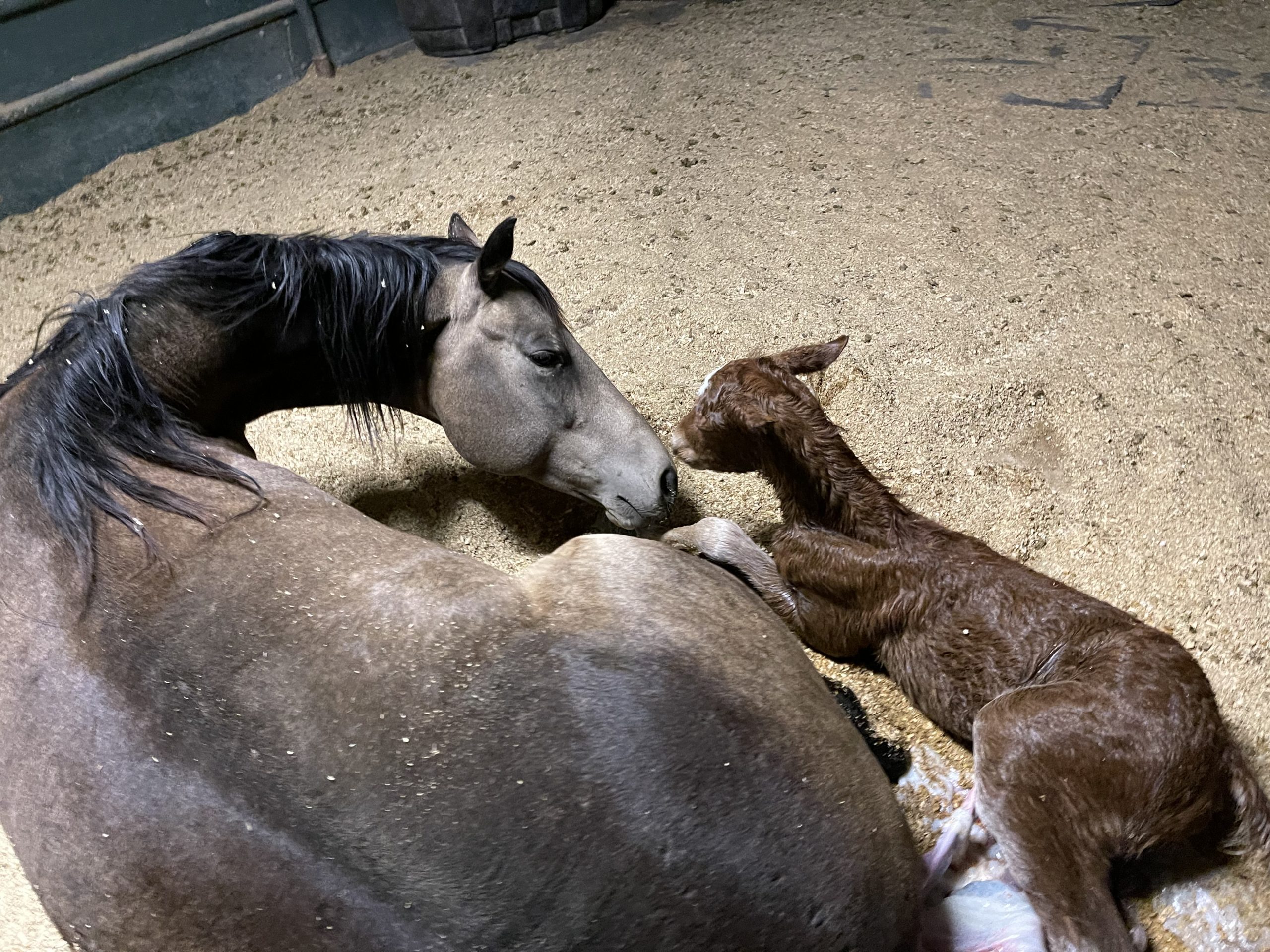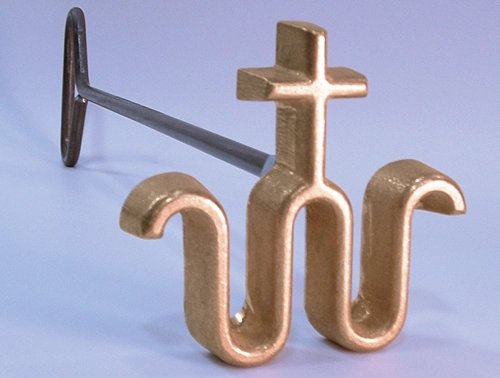Labor is divided into 3 stages:
- Stage 1 begins with the onset of contractions and generally lasts one to two hours. Even in a normal delivery, the mare may stand up, lie down and roll several times in an effort to properly position the foal for delivery. During this phase, contractions move the foal through the cervix and into position in the birth canal. The fetal membranes (allantois) may become visible at the mare’s vulva. When the sac breaks, signaled by a rush of fluid, stage one ends.The rupture of the allantoic membrane and rush of placental fluids may be confused with urination.
- Stage 2 is the actual expulsion of the foal. This phase moves relatively quickly. If it takes more than 30 minutes for the mare to deliver, there is most likely a problem. If there is no significant progress within 10 to 15 minutes after the membranes rupture, call your veterinarian immediately. If labor seems to be progressing, wait and watch. Normal presentation of the foal resembles a diving position, with front feet first, one slightly ahead of the other, hooves down, followed closely by the nose, head, neck, shoulders and hindquarters. If you notice hoof soles up, the foal may be backwards or upside down, and you should call your veterinarian immediately. If you suspect any deviation from the normal delivery position, call your equine practitioner. The most deadly of foaling emergencies is a premature rupture of the chorioallantois, known as “Red Bag Delivery.” If at any time during stage two you see red/maroon membranes covering the foal as it emerges from the vagina, the placenta must be rapidly torn open. The foal is detached from its blood and oxygen supply. Normal membranes that cover the foal are white or yellow and translucent.
- Stage 3 labor begins after delivery and is the phase during which the afterbirth (placenta) is expelled. Most placentas are passed within 1-3 hours after the foal is delivered. If the placenta has not passed within 3 hours, call your veterinarian. A retained placenta can cause serious problems, including massive infection and laminitis.
Contributing author Ben Espy, DVM, DACT
Foaling Mare & Newborn: Preparing for a Safe & Successful Foal Delivery
www.aaep.org








